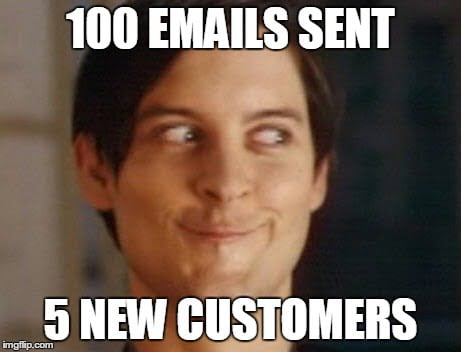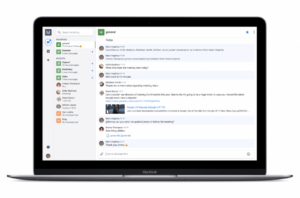Despite what some people might have you believe, email marketing is far from dead. It’s very much alive in fact, and still one of the best inbound marketing tools you can make use of today. Millions of brands do so every day and they do it for one very simple reason; when you do it right, it works, pure and simple.
If you have an email subscribe form on your website – and if you don’t you really should – people sign up knowing that they will be receiving emails from you in the future. That means you have a great chance of reaching them directly, as according to Business Insider 39% of people check their email 1-3 times a day while 34% more say they check more often, up to once an hour.
Email has a lot to offer in terms of measurable ROI as well. According to the DMA, it can offer 1.38 positive return on your investment every time you send a message. But there is a caveat that goes along with that; your messages must reach the right people.
And that, ladies and gentlemen, is the key. If you want to get the most out of any email marketing effort you do have to ensure that you are sending the right emails to the right person. How do you do that? Let’s take things step by step:
Determine Who Your Target Audience Is
Before you can decide if the right message is going to the right person you need to figure out just who that person is. So, before you compose another email you will need to formally determine who your ideal customers are.
To do this you need to know their interests, their behavioral patterns, goals, motivations and possibly most important of all, their pain points. There isn’t likely to be just a single buyer persona you want to appeal to either, the chances are that there are in fact several. Separate profiles should be created for each one.
This kind of research can be time consuming and confusing, but it’s worth the effort, as the more you know about your customers the better, and once you do you can better ensure you are sending the right messages to them as well.
Validate Your Prospects
Not everyone who signs up for your email list will actually do so with an email address that they make use of, or one that even exists. To complicate things even further someone who signed up a while ago may have changed their address by now. This can mean that there are more than a few addresses on your email lists that are no longer valid.
You may not think this is a problem. Email is not postal mail, so you aren’t wasting a stamp if you send a message to one of these not so valuable addresses. You will however be diluting the power of your email campaign as your open rate will drop, your bounce rate will probably increase, and your Sender Score will suffer as a result.
What’s a Sender Score? It’s like a credit rating from your bank, but from your email client instead. And it is something checked by the likes of Gmail and Yahoo! to determine just where your email should end up. The lower your score, the bigger the risk that your emails are sent straight to spam.
To validate the addresses on your list, make use of a tool like Find That Lead’s Verifier, which is quick and easy to work with, as well as very accurate.
Segment and Then Send at the Right Time
Your email should, as a matter of course, segment your email list by buyer persona. Different personas will respond to different messaging, so in grouping people according to their shared characteristics will allow you to tailor just the right messages to best appeal to them.
Demographics are not the only consideration to be taken into account to help ensure that the right email is getting to the right person though. It’s likely that people on your list are at different stages in the buying process, and this will make a difference as well.
There are three common stages in the buying process; awareness, consideration and decision. To be most effective your emails need to address the concerns that people will have at each of these stages. Sending them a message that is not will almost certainly be a waste of time. What should each separate missive try to convey? Here are some pointers:
- Awareness – You need to convey who you are and what your brand stands for.
- Consideration – Buyers at this stage need to know why you are a better choice than your competitors, what it is that sets your business apart.
- Decision – This is the time for testimonials, social proof and yes, maybe even a coupon or discount to tip the scales in your favor.
Sending out these targeted emails should effectively move your recipients down the sales funnel but that’s not the only thing they will do. They can also be used to build trust, establish yourself as an authority in your field and bolster your brand.
A Final Note About CATS: Not actual cats, of the meowing variety, but CATS. CATS is a simple acronym that you should remember in order to consistently send the right email to the right people at the right time. CATS, as in the right content, the right audience, and the right timing equal success. Keep this in mind and your next email marketing campaign should be the effective marketing tool you need it to be.







 BONUS:
BONUS: The Challenge: Join this free course and I guarantee that after 5 days you will have the necessary skills to start generating B2B clients Growth Hacking and Prospecting techniques.
The Challenge: Join this free course and I guarantee that after 5 days you will have the necessary skills to start generating B2B clients Growth Hacking and Prospecting techniques.